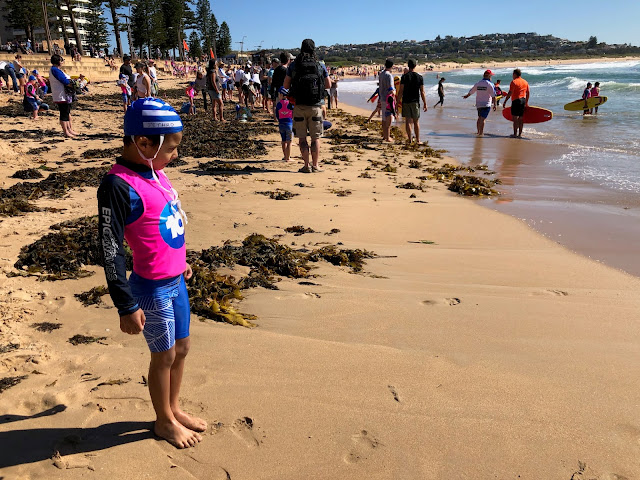While riding on the bus one afternoon, I saw a transit ad that captured my attention.
Having seen these lifeguards in their vivid red and yellow swimwear at various beaches, I was curious about them and the story behind the ad.
 |
| Transit Ad |
An opportunity presented itself on a stretch of Long Reef Beach when I met up with a group packing away their equipment.
I quickly made my way over for a chat.
They were happy to tell me that they were with one of fifteen volunteer surf lifesaving clubs managed by Surf Life-Saving Sydney (SLSS), a nonprofit, volunteer emergency service association committed to reducing coastal drownings on Sydney's beaches.
Nice!
The first step to becoming a volunteer is joining a surf club and paying annual membership fees, which cover the cost of uniforms and insurance.
Dues, government grants, corporate sponsors, donations, and fundraisers, help to fund the organization.
Under the tutelage of SLSS trainers, assessors, and facilitators, members learn personal survival, emergency care, and aquatic rescue skills along with how to use life-saving equipment for singular and mass rescues.
Definitely worth the dues!
 |
| SLSS Facebook Picture |
At age thirteen or older, those who have completed the surf rescue certificate and earned a bronze medallion can become lifesavers.
The Bronze medallion is the benchmark to attest that volunteers can perform aquatic rescues safely and efficiently,
Volunteers patrol the beaches in groups under the supervision of a patrol captain on weekends and holidays.
They work in addition to Sydney's paid lifeguards - who watch busier beaches every day throughout the season, which runs from October to March.
Rightly so, most folks associate Australia with amazing beaches, and with over 10,000 of them countrywide, 100 in Sydney, two groups of eyes (lifeguards and lifesavers) are better than one.
In typical Aussie fashion, lifesaver volunteers are colloquially called Clubbies.
Their bright beach patrol uniforms are deliberate. Yellow is associated with caution, and red is the typical color of lifeguard swimwear.
The two colors together make them and their life-saving equipment easy to spot.
 |
| Long Reef Beach Lifesavers |










I really enjoyed writing this post!
ReplyDeleteI’m happy you guys survived the “RIP”….I had a vested interest in it. “Rest In Peace” would not have been a happy outcome…keep those great blogs coming…
ReplyDeleteWill do!
DeleteYour blogs are so informative !!! Keep them coming…
ReplyDelete